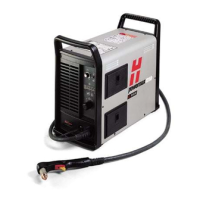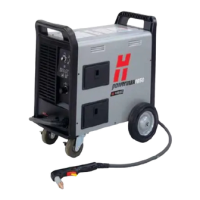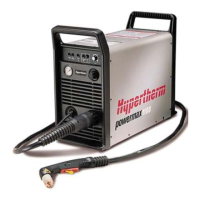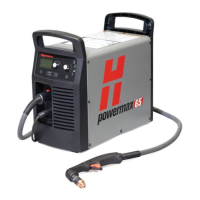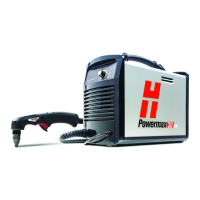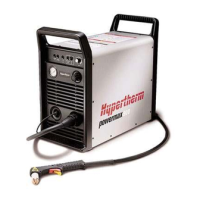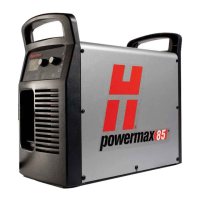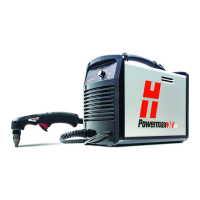Powermax125 Operator Manual 808080 Revision 0 75
6 – Machine Torch Setup
Using the cut charts
The following tables provide cut charts for each set of mechanized consumables. For each consumable type, there are
metric and English charts for mild steel, stainless steel, and aluminum. A consumable diagram with part numbers
precedes each set of cut charts.
Each cut chart contains the following information:
Amperage setting – The amperage setting at the top left side of the page applies to all the settings given on that
page. In FineCut charts, the amperage setting for each thickness is included in the cut chart.
Material Thickness – Thickness of the workpiece (metal plate being cut).
Torch-to-Work Distance – Distance between the shield and the workpiece during cutting. This may also be known
as cut height.
Initial Pierce Height – Distance between the shield and the workpiece when the torch is triggered, prior to
descending to the cut height.
Pierce Delay Time – Length of time the triggered torch remains stationary at the pierce height before the torch
starts the cutting motion.
Best Quality Settings (cut speed and voltage) – Settings that provide the starting point for finding the best cut
quality (best angle, least dross, best cut-surface finish). Adjust the speed for your application and table to obtain the
desired result.
Production Settings (cut speed and voltage) – 70% to 80% of the maximum speed ratings. These speeds result in
the greatest number of cut parts, but not necessarily the best possible cut quality.
The arc voltage increases as the consumables wear, so the voltage setting may need to
be increased to maintain the correct torch-to-work distance. Some CNCs monitor the arc
voltage and adjust the torch lifter automatically.
Each cut chart lists hot and cold air flow rates.
Hot air flow rate – Plasma is on, the system is operating at running current, and the system is in a steady state at
the default system pressure (automatic mode).
Cold air flow rate – Plasma is off and the system is in a steady state with air flowing through the torch at the default
system pressure.
Hypertherm collected the cut chart data under laboratory test conditions using new
consumables.
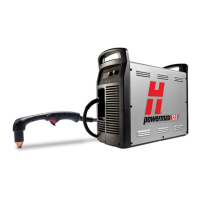
